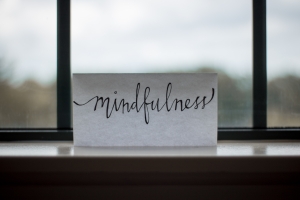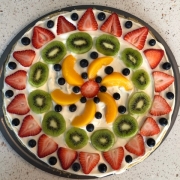5 Steps To Discover The Satisfaction Factor
Today we are back with the Intuitive Eating series! We are going to start diving into Intuitive Eating Principle #6: Discover The Satisfaction Factor.
So, what is the satisfaction factor?
Have you ever eaten a meal, felt physically full, but felt like something was missing and you wanted something more? If so, it could have potentially been that you were not satisfied. Being physically full or satiated is different than feeling satisfied.
Our society has become so focused on eating to lose weight or seeking health that we sometimes forget a very important role that eating plays in our lives. Food provides pleasure. Humans are hard wired to experience pleasure from food and eating. If we weren’t we wouldn’t be very good at staying alive as a species. When we are stuck in disordered eating and chronic dieting it is hard to get pleasure from foods. This then leads to binging, overeating or eventually feeling out of control. There is a lot of fear around enjoying food. I hear it all of the time from clients. Part of this fear stems from a fear of feeling out of control or that if you enjoy a food you will never stop eating it. When in actuality the deprivation is leading to feeling out of control. If we allow ourselves the opportunity to enjoy foods we will be satisfied and not get that lack of control feeling.
Studies have shown that our pleasure and satisfaction around meal times affects our body’s ability to absorb and assimilate the nutrients in our food. When we allow ourselves to enjoy our food we experience better digestion and can identify feelings of fullness and contentment.
Here are some steps to help you rediscover the pleasure in eating:
- Think about what you want
 Consider a time where you went out to eat somewhere and thought about ordering a cheeseburger, but felt like you should get something else. Now it’s time to consider what you actually want in that moment, not what you think you should have. Consider what foods you actually like. This step can take a lot of time and patience. After chronic dieting or eating disorder behaviors it can be hard to identify our preferences and what we like. It can be helpful to ask some of the following:
Consider a time where you went out to eat somewhere and thought about ordering a cheeseburger, but felt like you should get something else. Now it’s time to consider what you actually want in that moment, not what you think you should have. Consider what foods you actually like. This step can take a lot of time and patience. After chronic dieting or eating disorder behaviors it can be hard to identify our preferences and what we like. It can be helpful to ask some of the following:
Do I want something sweet or savory? Do I want something hot or cold? What texture do I want or like? Crunchy? Soft? Chewy?
- Discover the qualities of food

Take time to consider the different qualities of food and what you like or dislike about them. Think about taste, texture, aroma, appearance, temperate, and volume or filling capacity of the food as you eat. Respect your taste preferences. Everybody is different and will like different things.
 3. Make your eating experience more enjoyable (when possible)
3. Make your eating experience more enjoyable (when possible)
Take time to appreciate and savor your food. Make your eating environment enjoyable with a pretty tablecloth or getting rid of clutter all over the table. Take a few deep breaths before eating. Pay attention to your eating, being mindful and eating slowly.
- Don’t settle
 You do not have to eat all of a food just because you started. If you order something and don’t like it, get something different, if possible. Remember you do not have to clean your plate, trying to get out of the mindset of always cleaning your plate.
You do not have to eat all of a food just because you started. If you order something and don’t like it, get something different, if possible. Remember you do not have to clean your plate, trying to get out of the mindset of always cleaning your plate.
- Check in during the meal
Check in while you are eating and ask, does this still taste good? How am I feeling? Is this satisfying?
And always remember it doesn’t have to be, nor will it ever be, perfect!
If you would like some help working through your eating patterns or discussing Intuitive Eating you can contact me here, as always!
Happy eating!
Source: Intuitive Eating by Evelyn Tribole and Elyse Resch









